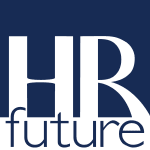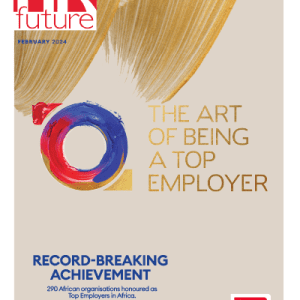Many business operations are now utilizing digital tools to ensure efficiency and productivity. Digitalization has primarily been used in industries but has now found its way to human resources (HR).
By utilizing human resources information software (HRIS), you can say goodbye to piles of paper for filing leaves. However, leave management is just one of the modules of an HRIS. Other key modules are time tracking, expense report management, organization, personnel file management, and procure to pay.
This article will highlight some of the favorable outcomes of integrating this solution in your HR operations, particularly in the leave management process.
1. Process Digitalization
The leave management process typically involves several stages involving different individuals in the organization: application for leave, approval or rejection, recording of approved leave, and updating leave balance. Managing this, not just for one employee but for as many employees as there are in the organization, is tiresome and time-consuming.
Digitalizing this tedious process is now possible with the use of an HR management solution such as My Intranet HR software. This HRIS solution allows employees to submit paperless leave applications and supervisors to approve or reject leave requests using the system. Employees can then view their remaining leave credits in real time. This eases the management of the once complex leave process.
2. Time Saving
Manually managing the leave process involves a lot of paper and consumes considerable time, taking quite a toll on your employees.
On the other hand, using an HRIS solution allows your employees, supervisors, HR staff, and even the payroll administrator to save precious time.
- Employees: Your employees don’t have to fill out paper forms and chase their supervisors to sign their leave requests. Also, they don’t have to bother HR staff about their remaining leave credits.
- Supervisors: Your supervisors are spared from the constant disruption of subordinates requesting their approval for leave requests and having to manually check the team’s leave calendar. Since supervisors can access the team’s real-time leave calendar in the system, they can readily decide whether to approve or reject a leave request.
- HR Staff: Your HR staff can devote more time to their essential tasks without being routinely bothered by employees inquiring about their leave entitlement.
- Payroll Administrator: The payroll administrator doesn’t waste time validating and consolidating leave requests as the system can generate a complete report.
With the digitalization of the leave process, your employees can focus their energies on the core operations of your business that bring in returns.
3. Cost Reduction
Employing a reliable HRIS solution enables your business to cut costs. You save on paper, ink, and other office supplies. And you don’t have to buy additional filing cabinets for the ever-mounting paperwork.
Since the system allows you to go paperless in managing the leave process, you can cut back on the number of HR staff. With a digitalized process, HR operations are completed quickly and accurately.
4. System Integration
Aside from leave process management, other administrative tasks integrated into the HRIS include automated timekeeping and payroll administration.
When the payroll system is integrated with time tracking and personnel database, there’s no need for additional manual data entry, which would be the case if the systems are separate. The system also automatically updates its data whenever changes are made in any of its modules.
Furthermore, the system consolidates attendance data, eliminating the need to constantly cross-check and manually compile records from different departments. With this, the risk of error is greatly reduced.
5. Better Record Keeping
The leave process requires a lot of paper documentation to ensure its success.
If this process is done manually, you’d need several filing cabinets and adequate space to house them all. They’ll contain all the pertinent paperwork for present and even former employees. With a manual filing system, even if it’s highly organized, retrieving any needed information takes some time and involves a lot of frustration if any file is misplaced.
On the other hand, digitalization offers a better record-keeping system as it stores all personnel files in one system. Retrieval is faster and more convenient. Additionally, employees can view their remaining real-time leave credits and supervisors can keep track of their team’s schedules with just a few clicks.
6. Reduced Errors
There’s plenty of room for errors with manual management of the leave process.
Manually tracking the dates of leave taken by each employee and updating their leave records is not only time-consuming but also prone to human error. Since any errors in this area affect the employee’s payout, matters could get pretty complicated.
Errors associated with manual data entry and resulting complications are greatly reduced with the use of an HRIS solution. The system also allows transparency as employees can view their leave records. This contributes to employee satisfaction, which may lead to better work performance.
7. Data Backup
Without digitalization, you’re forced to store all your data in a physical location. This is risky since they’re prone to damage and loss.
Rainwater can find its way into your storage area, destroying important documents with no way of ever recovering them. There could also be a fire breakout or theft.
On the other hand, most HRIS solutions are cloud-based. Since your data is stored in the cloud, you can access it whenever you need to, whether you’re in the office or anywhere else. Data recovery is also easier. In addition, data encryption makes sensitive personnel information accessible only to authorized users and protects it from cyberattacks.
8. Better Compliance
Labor laws dictate a certain number of paid and unpaid leaves that employees are entitled to. As a business owner, you must be compliant with these regulations. With a manual system, it’s challenging to comply with such strict regulations.
An HRIS solution is a valuable help in this area. The system can automatically generate reports required by regulating bodies. The system can also send a notification to HR if there are employees who haven’t availed themselves of any leave days when the calendar year is about to end.
With a digitized leave process, you’re assured of compliance and avoidance of penalties because the system does the monitoring for you.
Conclusion
The outcomes mentioned above are some of the advantages of adopting an HR management solution for your business. This begs the question: will you incorporate this technology in your operations? The decision is up to you.













